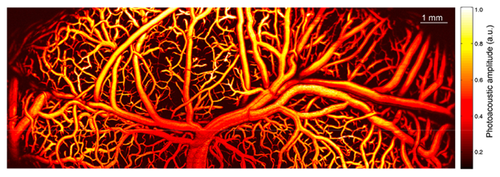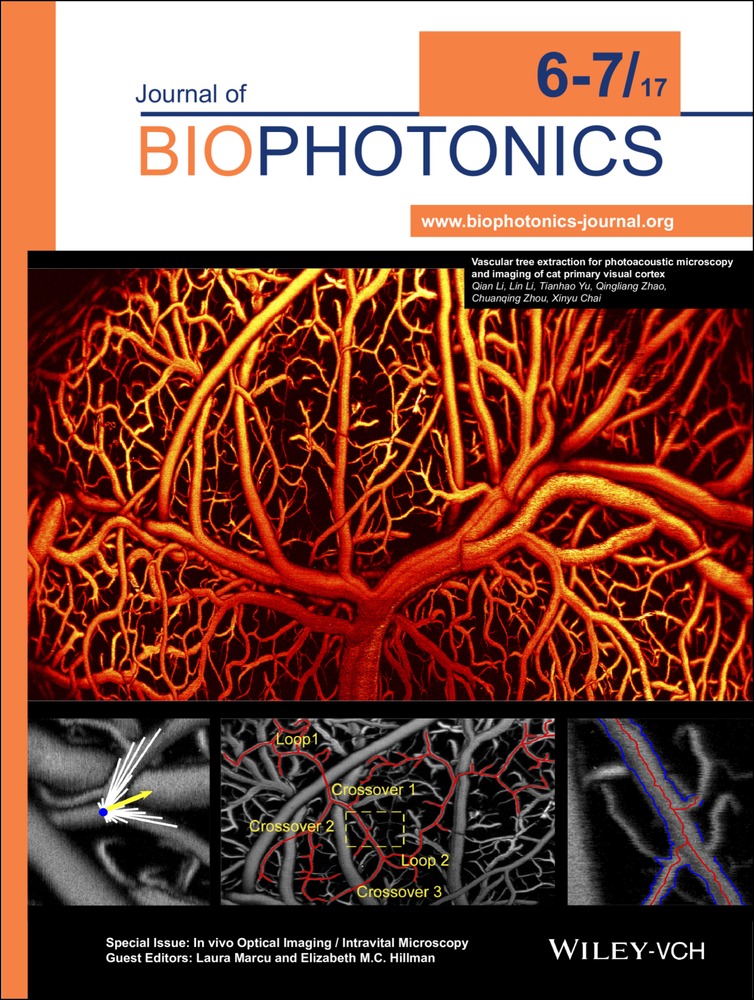Vascular tree extraction for photoacoustic microscopy and imaging of cat primary visual cortex
Abstract
A vascular tree extraction algorithm is proposed to automatically extract independent and complete vascular trees from both background and other crossed vascular trees for photoacoustic microscopy (PAM) imaging. Extracted parameters include vascular tree centerline, diameters, boundaries and three-dimensional (3-D) direction along the tree. Based on the concept of blood vessel tracking, the proposed algorithm extracts complete vascular trees by utilizing a ray casting framework to realize functions which includes vessel direction estimation, vessel branching detection and vessel crossover point detection. An optical-resolution PAM (OR-PAM) system is set up and the acquired images of cat primary visual cortex are used to demonstrate the effectiveness of the proposed algorithm. The proposed algorithm successfully extracts a complete and complex arteriole tree composed of multiple loop structures. Most branches and vessel crossovers in the arteriole tree are accurately extracted. Accuray of the algorithm is further tested on phantom images and real OR-PAM vascular tree images. As the extracted parameters are directly related with monitoring hemodynamic responses at the level of vascular trees, the proposed algorithm may facilitate the application of PAM on studies of neurovascular coupling and related brain functions and diseases.





